1.
Introduction
Modular metric spaces were introduced in [4,5]. Behind this new notion, there exists a physical interpretation of the modular. A modular on a set bases on a nonnegative (possibly infinite valued) “field of (generalized) velocities”: to each time λ>0 (the absoulute value of) an averge velocity ωλ(ρ,σ) is associated in such that in order to cover the distance between points ρ,σ∈M, it takes time λ to move from ρ to σ with velocity ωλ(ρ,σ), while a metric on a set stands for non-negative finite distances between any two points of the set. The process of access to this notion of modular metric spaces is different. Actually we deal with these spaces as the nonlinear version of the classical modular spaces as introduced by Nakano [12] on vector spaces and modular function spaces introduced by Musielack [11] and Orlicz [13]. In [1,2] the authors have defined and investigated the fixed point property in the context of modular metric space and introduced several results. For more on modular metric fixed point theory, the reader may consult the books [7,8,9]. Some recent work in modular metric space has been represented in [14,15]. It is almost a century where several mathematicians have improved, extended and enriched the classical Banach contraction principle [1] in different directions along with variety of applications. In 1969, Kannan [6] proved that if X is complete, then a Kannan mapping has a fixed point. It is interesting that Kannan’s theorem is independent of the Banach contraction principle [3].
In this research article, fixed point problem for Kannan mappings in the framework of modular metric spaces is investigated.
2.
Basic Notation and Terminology
Let M≠∅. Throughout this paper for a function ω:(0,∞)×M×M→[0,∞], we will write
for all λ>0 and ρ,σ∈M.
Definition 1. [4,5] A function ω:(0,∞)×M×M→[0,∞] is called a modular metric on M if following axioms hold:
(ⅰ) ρ=σ⇔ωλ(ρ,σ)=0, for all λ>0;
(ⅱ) ωλ(ρ,σ)=ωλ(σ,ρ), for all λ>0, and ρ,σ∈M;
(ⅲ) ωλ+μ(ρ,σ)≤ωλ(ρ,ς)+ωμ(ς,σ), for all λ,μ>0 and ρ,σ,ς∈M.
A modular metric ω on M is called regular if the following weaker version of (ⅰ) is satisfied
Eventually, ω is called convex if for λ,μ>0 and ρ,σ,ς∈M, it satisfies
Throughout this work, we assume ω is regular.
Definition 2. [4,5] Let ω be a modular on M. Fix ρ0∈M. The two sets
and
are called modular spaces (around ρ0).
It is obvious that Mω⊂M∗ω but this involvement may be proper in general. It follows from [4,5] that if ω is a modular on M, then the modular space Mω can be equipped with a (nontrivial) metric, generated by ω and given by
for any ρ,σ∈Mω. If ω is a convex modular on M, according to [4,5] the two modular spaces coincide, i.e. M∗ω=Mω, and this common set can be endowed with the metric d∗ω given by
for any ρ,σ∈Mω. These distances will be called Luxemburg distances.
Following example presented by Abdou and Khamsi [1,2] is an important motivation of the concept modular metric spaces.
example 3. Let Ω be a nonempty set and Σ be a nontrivial σ-algebra of subsets of Ω. Let P be a δ-ring of subsets of Ω, such that E∩A∈P for any E∈P and A∈Σ. Let us assume that there exists an increasing sequence of sets Kn∈P such that Ω=⋃Kn. By E we denote the linear space of all simple functions with supports from P. By N∞ we will denote the space of all extended measurable functions, i.e. all functions f:Ω→[−∞,∞] such that there exists a sequence {gn}⊂E, |gn|≤|f| and gn(ω)→f(ω) for all ω∈Ω. By 1A we denote the characteristic function of the set A. Let ρ:N∞→[0,∞] be a nontrivial, convex and even function. We say that ρ is a regular convex function pseudomodular if:
(ⅰ) ρ(0)=0;
(ⅱ) ρ is monotone, i.e. |f(ω)|≤|g(ω)| for all ω∈Ω implies ρ(f)≤ρ(g), where f,g∈N∞;
(ⅲ) ρ is orthogonally subadditive, i.e. ρ(f1A∪B)≤ρ(f1A)+ρ(f1B) for any A,B∈Σ such that A∩B≠∅, f∈N;
(ⅳ) ρ has the Fatou property, i.e. |fn(ω)|↑|f(ω)| for all ω∈Ω implies ρ(fn)↑ρ(f), where f∈N∞;
(ⅴ) ρ is order continuous in E, i.e. gn∈E and |gn(ω)|↓0 implies ρ(gn)↓0.
Similarly, as in the case of measure spaces, we say that a set A∈Σ is ρ-null if ρ(g1A)=0 for every g∈E. We say that a property holds ρ-almost everywhere if the exceptional set is ρ-null. As usual we identify any pair of measurable sets whose symmetric difference is ρ-null as well as any pair of measurable functions differing only on a ρ-null set. With this in mind we define
where each f∈N(Ω,Σ,P,ρ) is actually an equivalence class of functions equal ρ-a.e. rather than an individual function. Where no confusion exists we will write M instead of N(Ω,Σ,P,ρ). Let ρ be a regular function pseudomodular.
(a) We say that ρ is a regular function semimodular if ρ(αf)=0 for every α>0 implies f=0 ρ−a.e.;
(b) We say that ρ is a regular function modular if ρ(f)=0 implies f=0 ρ−a.e.
The class of all nonzero regular convex function modulars defined on Ω will be denoted by ℜ. Let us denote ρ(f,E)=ρ(f1E) for f∈N, E∈Σ. It is easy to prove that ρ(f,E) is a function pseudomodular in the sense of Def.2.1.1 in [10] (more precisely, it is a function pseudomodular with the Fatou property). Therefore, we can use all results of the standard theory of modular function space as per the framework defined by Kozlowski in [10], see also Musielak [11] for the basics of the general modular theory. Let ρ be a convex function modular.
(a) The associated modular function space is the vector space Lρ(Ω,Σ), or briefly Lρ, defined by
(b) The following formula defines a norm in Lρ (frequently called Luxemburg norm):
A modular function spaces furnishes a wonderful example of a modular metric space. Indeed, let Lρ be modular function space.
example 4. Define the function ω by
for all λ>0, and f,g∈Lρ. Then ω is a modular metric on Lρ. Note that ω is convex if and only if ρ is convex. Moreover we have
for any f,g∈Lρ.
For more examples readers can see [4,5]
Definition 5. [1]
(1). A sequence {ρn}⊂Mω is ω
-convergent to ρ∈Mω if and only if ω1(ρn,ρ)→0.
(2). A sequence {ρn}⊂Mω is ω
-Cauchy if ω1(ρn,ρm)→0 as n,m→∞.
(3). A set K⊂Mω is ω-closed if the limit of ω1-convergent sequence of K always belongs to K.
(4). A set K⊂Mω is ω-bounded if
(5). If any ω-Cauchy sequence in a subset K of Mω is a convergent sequence and its limit is in K, then K is called an ω-complete.
(6). The ρ-centered ω-ball of radius r is defined as
for any ρ∈Mω and r≥0.
Let (M,ω) be a modular metric space. In the rest of this work, we assume that ω satisfies the Fatou property, i.e. if {ρn}ω-converges to ρ and {σn}ω
-converges to σ, then we must have
for any ρ∈Mω.
Definition 6. Let (M,ω) be a modular metric space. We define an admissible subset of Mω as intersection of modular balls.
Note that if ω satisfies the Fatou property, then the modular balls are ω-closed. Hence any admissible subset is ω-closed.
The heading levels should not be more than 4 levels. The font of heading and subheadings should be 12 point normal Times New Roman. The first letter of headings and subheadings should be capitalized.
3.
Modular Kannan mappings in modular metric space
It is well-known that every Banach contractive mapping is a continuous function. In 1968, Kannan [6] was the first mathematician who found the answer and presented a fixed point result in the seting of metric space as following.
Theorem 7. [6] Let (M,d) be a complete metric space and J:M→M be a self-mapping satisfying
∀ρ,σ∈M and α∈[0,12). Then J has a unique fixed point ς∈M, and for any ρ∈M the sequence of itreaive (Jn(ρ)) converges to ς.
Before we state our results, we introduce the defintion of Kannan mappings in modular metic spaces.
Definition 8. Let K be a nonempty subset of Mω. A mapping J:K→K is called Kannan ω
-Lipschitzian if ∃α≥0 such that
∀ρ,σ∈K. The mapping J is said to be:
(1). Kannan ω-contraction if α<1/2;
(2). Kannan ω-nonexpansive if α=1/2.
(3) ς∈K is said to be fixed point of J if J(ς)=ς.
Note that all Kannan ω-Lipschitzian mappings have at most one fixed point due to the regularty of ω.
The following result discusses the existence of fixed point for kannan contraction maps in the setting of modular metric spaces.
Theorem 9. Let (M,ω) be a modular metric space. Assume that K is a nonempty ω-complete of Mω. Let J:K→K be a Kannan ω
-contraction mapping. Let ς∈K be such that ω1(ς,J(ς))<∞. Then {Jn(ς)}ω-converges to some τ∈K. Furthermore, we have ω1(τ,J(τ))=∞ or ω1(τ,J(τ))=0 (i.e., τ is the fixed point of J)
Proof. Let ς∈K such that ω1(ς,J(ς))<+∞. Now we establish that {Jn(ς)} is ω-convergent. As K is ω-complete, it suffices to prove that {Jn(ς)} is ω-Cauchy. Since J is a Kannan ω-contraction mapping, so ∃α∈[0,1/2) such that
for any ρ,σ∈K. Set k=α/(1−α)<1. Furthermore
which implies
for any n≥1. Hence,
for any n∈N. As J is a Kannan ω
-contraction mapping, so we get
which implies
for n≥1 and h∈N. As k<1 and ω1(ς,J(ς))<+∞, we conclude that {Jn(ς)} is ω-Cauchy, as claimed. Let τ∈K be the ω-limit of {Jn(ς)}. As K is ω
-closed, we get τ∈K. Suppose that ω1(τ,J(τ))<+∞; then we will obtain that ω1(τ,J(τ))=0. As
for any n≥1. By the use of Fatou's property, we obtain
Since α<1/2, we conclude that ω1(τ,J(τ))=0, i.e., τ is the fixed point of J.
The upcoming result is the analogue to Kannan's extention of the classical Banach contraction principle in modular metric space.
Corollary 10. Let K be a nonempty ω-closed subset of Mω. Let J:K→K be a Kannan ω-contraction mapping such that ω1(ρ,J(ρ))<+∞, for any ρ∈K. Then for any ς∈K, {Jn(ς)}ω-converges to the unique fixed point ς of J. Furthermore, if α is the Kannan constant associated to J, then we have
for any ρ∈K and n≥1.
Proof. From Theorem 9, we can obtain the proof of first part directly. Using the inequality (NK) and since k<1, we get
Now, using the fatou's property, we have
for any n≥1 and ς∈K.
Recall that an admissible subset of Mω is defined as an intersection of modular balls.
Definition 11. We will say that:
(ⅰ). if any decreasing sequence of nonempty ω-bounded admissible subsets in Mω have a nonempty intersection, then Mω is said to satisfy the property (R),
(ⅱ). if for any nonempty ω-bounded admissible subset K with more than one point, there exists ρ∈K such that
for any σ∈K, then Mω is said to satisfy ω-quasi-normal property.
Following technical lemma is very useful in the proof of our theorem.
Lemma 12. Suppose that Mω satisfy the both (R) property and the ω-quasi-normal property. Let K be a nonempty ω-bounded admissible subset of Mω and J:K→K be a Kannan ω-nonexpansive mapping. Fix r>0. Suppose that Ar={ρ∈K; ω1(ρ,J(ρ))≤r}≠∅. Set
Then Kr≠∅, ω-closed admissible subset of K and
Proof. As J(Ar) is strictly contained in each balls and intersection of all balls contained in Kr. Thus J(Ar)⊂Kr, and Kr is not empty. From definition of admissible set, we deduce that Kr is an admissible subset of K. Let us prove that Kr⊂Ar. Let ρ∈Kr. If ω1(ρ,J(ρ))=0, then obviously we have ρ∈Ar. Otherwise, assume ω1(ρ,J(ρ))>0. Set
From the definition of s, we have J(Ar)⊂Bω(J(ρ),s). Hence Kr⊂Bω(J(ρ),s), which implies ω1(ρ,J(ρ))≤s. Let ε>0. Then ∃ς∈Ar such that s−ε≤ω1(J(ρ),J(ς)). Hence
As we are taking ε an arbitrarily positive number, so we get
which implies ω1(ρ,J(ρ))≤r, i.e., ρ∈Ar as claimed. Since J(Ar)⊂Kr, we get J(Kr)⊂J(Ar)⊂Kr, i.e., Kr is J-invariant. Now we prove that δω(Kr)≤r. First, we observe that
for any ρ,σ∈Ar. Fix ρ∈Ar. Then J(Ar)⊂Bω(J(ρ),r). The definition of Kr implies Kr⊂Bω(J(ρ),r). Thus J(ρ)∈⋂σ∈Kr Bω(σ,r), which implies J(Ar)⊂⋂σ∈Kr Bω(σ,r). Again by the definition of Kr, we get Kr⊂⋂σ∈Kr Bω(σ,r). Therefore, we have ω1(σ,ς)≤r, for any σ,ς∈Kr, i.e., δω(Kr)≤r.
Now, we are able to state and prove our result for ω
-nonexpansive Kannan maps on modular metric spaces.
Theorem 13. Suppose that Mω satisfies both the (R) property and the ω-quasi-normal property. Let K be a nonempty ω-bounded admissible subset of Mω and J:K→K is a Kannan ω-nonexpansive mapping. Then J has a fixed point.
Proof. Set r0=inf {ω1(ρ,J(ρ)); ρ∈K} and rn=r0+1/n, for n≥1. By definition of r0, the set Arn={ρ∈K; ω1(ρ,J(ρ))≤rn} is not empty, for any n≥1. Taking Krn defined in Lemma 12. It is simple to analyze that {Krn} is a decreasing sequence of nonempty ω-bounded admissible subsets of K. The property (R) implies that K∞=⋂n≥1 Krn ≠∅. Let ρ∈K∞. Then we have ω1(ρ,J(ρ))≤rn, for any n≥1. If we let n→∞, we get ω1(ρ,J(ρ))≤r0 which implies ω1(ρ,J(ρ))=r0. Hence the set Ar0≠∅. We claim that r0=0. Otherwise, assume r0>0 which implies that J fails to have a fixed point. Again consider the set Kr0 as defined in Lemma 12. Note that since J fails to have a fixed point and Kr0 is J-invariant, then Kr0 has more than one point, i.e., δω(Kr0)>0. It follows from the ω
-quasi-normal property that there exists ρ∈Kr0 such that
for any σ∈Kr0. From Lemma 12, we know that Kr0⊂Ar0. From the definition of Kr0, we have
Hence Obviously this will imply
which is a contradiction with the definition of r0. Hence r0=0 which implies that any point in K∞ is a fixed point of J, i.e., J has a fixed point in K.
4.
Conclusions
In this paper, we have introduced some notions to study the existence of fixed points for contractive and nonexpansive Kannan maps in the setting of modular metric spaces.Using the modular convergence sense, which is weaker than the metric convergence we have proved our results. The proved results generalized and improved some of the results of the literature.
Acknowledgement
This work was funded by the University of Jeddah, Saudi Arabia, under grant No. UJ-02-081-DR. The author, therefore, acknowledges with thanks the University technical and financial support. The author would like to thank Prof. Mohamed Amine Khamsi for his fruitful discussion and continues supporting of this paper.
Conflict of interest
The author declares that they have no competing interests.











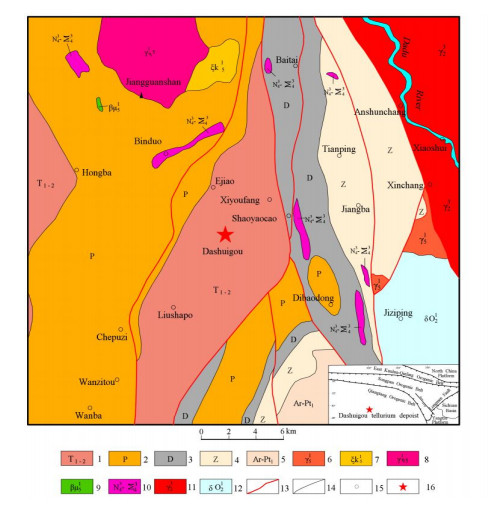
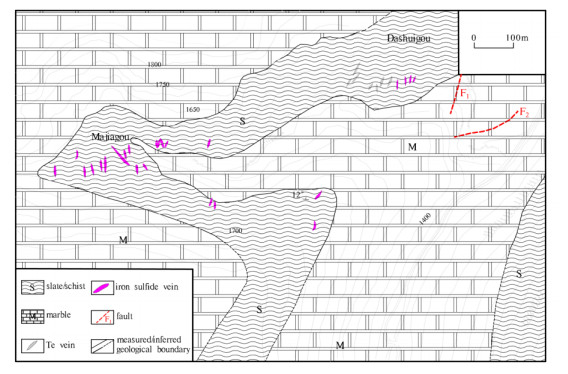
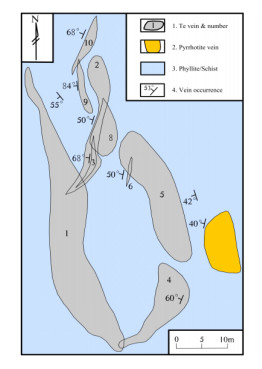
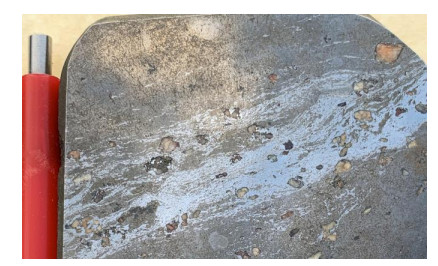
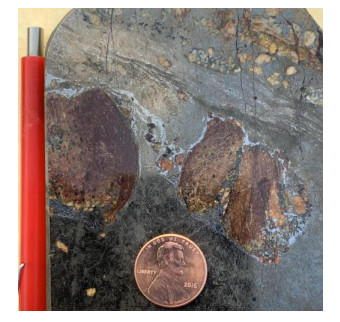


 DownLoad:
DownLoad: